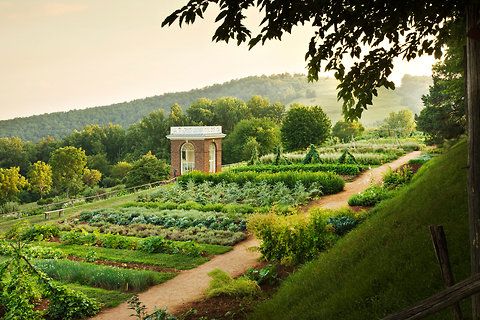Thomas Jefferson, The Farming Trendsetter
Popular on Food52
6 Comments
Patrick L.
August 30, 2012
Thomas Jefferson now blogs!
Several times each week, he posts briefly on a variety of topics, including Monticello, agriculture & his gardens.
Recent posts:
- How do the poor people live?
- Were you this clever at 16?
- What’s a valetudinarian? (You don’t want to be one.)
- (a video post) Does one lie lead to another? And another? And …
- Can I get an “Amen!,” somebody?
Read his own words at http://ThomasJeffersonLeadership.com/blog/
Several times each week, he posts briefly on a variety of topics, including Monticello, agriculture & his gardens.
Recent posts:
- How do the poor people live?
- Were you this clever at 16?
- What’s a valetudinarian? (You don’t want to be one.)
- (a video post) Does one lie lead to another? And another? And …
- Can I get an “Amen!,” somebody?
Read his own words at http://ThomasJeffersonLeadership.com/blog/
gheanna
August 23, 2012
Ah! Yes indeed, the article does specify that it was restored in the '80s and '90s. Wonder how the previous work on Monticello was glossed over, especially since it started in the 1800s by his nephew!
AntoniaJames
August 23, 2012
The article says that the gardens were restored in the '80s and '90s. Your head note said that Monticello was restored in the '80s and '90s. There is quite a difference in those two statements. Also, the article does not say that Monticello fell apart after Jefferson's death. It says, "The garden disappeared shortly after Jefferson died in 1826." Monticello was actually unfinished when Jefferson died. It was not well maintained in the decades after Monticello died, so it did need restoration in the late 1800's. ;o)
Kenzi W.
August 23, 2012
Thanks for the info. We didn't realize we had a Monticello expert on our hands! The article specifies that a restoration project was very active in the 80s and 90s, but it's definitely worth noting that it has been happening all along!
AntoniaJames
August 23, 2012
Oh goodness, I'm not a Monticello expert by any means. Anyone who's attended The University in the past 60 years (or who went to a public school in the Commonwealth of Virginia during the same period) probably could tell you that. The grounds there -- not to mention the breathtaking view of the Blue Ridge -- are, and have been as long as I can remember, simply gorgeous. (We had a nice view of the Blue Ridge from the library at the law school, too.) For anyone interested, Bill Bryson's recent book, "At Home," includes a fascinating chapter on Palladian architecture which, of course, contains quite a bit about Monticello and Mr. Jefferson (and his wine cellar!). This new book looks like a must-read, too. ;o)
AntoniaJames
August 23, 2012
Just for the record, the main building at Monticello was restored in the late 1800s by Jefferson's nephew, and then further restored and made a museum and learning center when the Thomas Jefferson Foundation bought the property in 1923. It was beautifully maintained when I visited it in the 1960's and restoration of the gardens was well underway when I was in law school at The University (Mr. Jefferson's university) in the early 1980's. So it's really not correct to say that it -- Monticello -- experienced a rebirth 20 years ago. ;o)


See what other Food52 readers are saying.